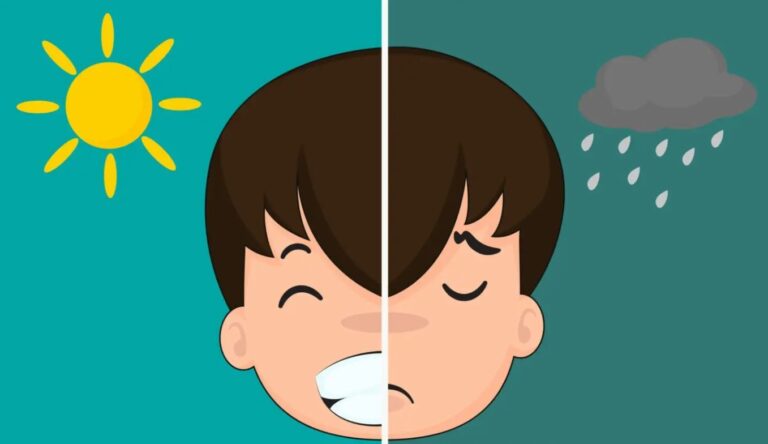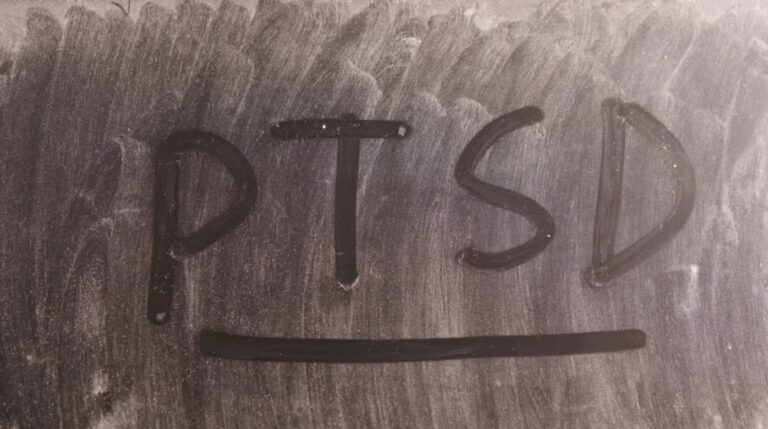Schizoaffective disorder involves psychotic symptoms like hallucinations and delusions, along with mood issues such as depression and mania. People with this disorder have hallucinations, where they perceive things that aren’t real and hold delusional beliefs not based on reality.
They also struggle with mood problems, ranging from feelings of sadness, emptiness, and worthlessness during depressive episodes, to heightened energy, reduced need for sleep, and unusual behavior during manic periods.
For a schizoaffective disorder diagnosis, the psychotic symptoms must be present for at least two weeks, even when the mood disturbances are not prominent.
What Are The Main Causes?

- Genetics
- Biological Factors
- External Factors
- Substance Abuse
- Stress and Trauma
The exact cause of schizoaffective disorder remains unclear, but research suggests a combination of genetic, biological, and environmental factors contribute to its development. (1)
Family history plays a significant role, as individuals with a close relative who has schizoaffective disorder, schizophrenia, or bipolar disorder are at a higher risk, pointing to a genetic link. (2)
Neurobiological abnormalities, such as altered neurotransmitter levels and brain structure/function irregularities, have also been implicated.
Environmental influences, including prenatal exposure to toxins or infections, complications during birth, and significant stress during early development, can increase susceptibility. Substance abuse, especially during adolescence and early adulthood, is another risk factor, as mind-altering drugs can trigger symptoms in vulnerable individuals.
Stressful life events and trauma, particularly during critical developmental periods, can also precipitate the onset of schizoaffective disorder.
Individuals with this condition face a greater risk of complications, including suicide, social isolation, unemployment, substance abuse, health issues, and violence.
Diagnosis

The diagnosis is based on criteria outlined in the Diagnostic and Statistical Manual of Mental Disorders (DSM-5).
Key diagnostic criteria include a major mood episode (depressive or manic) concurrent with symptoms of schizophrenia, hallucinations, or delusions for at least two weeks in the absence of a major mood episode, and mood symptoms present for the majority of the illness’s total duration.
Differential diagnosis is crucial to rule out other conditions that may present with similar symptoms, such as bipolar disorder, major depressive disorder with psychotic features, schizophrenia, and substance-induced psychotic disorder.
This often involves ruling out substance abuse, medical conditions, and other psychiatric disorders through laboratory tests and medical imaging.
Psychological testing and standardized assessment tools may be used to evaluate the severity and impact of the symptoms, revealing specific deficits in areas such as memory, attention, and executive functioning.
Medical and laboratory tests, such as blood tests, urine tests, and brain imaging studies, can help exclude other medical issues and substance use that could be contributing to the symptoms.
Finally, a longitudinal assessment of symptoms is often necessary because schizoaffective disorder can have a fluctuating course. Monitoring the patient’s symptoms over time helps in confirming the diagnosis and differentiating it from other psychiatric disorders, allowing for adjustments to the treatment plan as needed. (3)
Treatment
Treatment for schizoaffective disorder uses a mix of medications, therapy, and support. The main goals are to control symptoms, prevent relapses, and improve quality of life.
Medication
- Antipsychotics to manage psychotic symptoms like hallucinations and delusions
- Mood stabilizers for the bipolar type to control manic and depressive episodes
- Antidepressants to treat depressive symptoms
Therapy
- Cognitive Behavioral Therapy to change negative thought patterns (4)
- Family therapy to improve support and communication
Other helpful support includes:
- Self-care strategies like managing stress and sleep
- Support groups to connect with others
- Social services assistance with daily living (5)
In severe cases, hospitalization may be needed to ensure safety and intensive treatment. Electroconvulsive therapy (ECT) may also be used for treatment-resistant cases.
The specific treatment plan depends on the person’s symptoms and needs. It often requires trying different medications and approaches to find what works best.
Advances, Prognosis, and Support
Brain scans and genetic studies have found changes linked to the condition. New medications and therapies are also improving treatment.
How well someone does with schizoaffective disorder can vary. With the right treatment, many are able to manage their symptoms and live well. However, it is a lifelong condition that requires ongoing care.
Possible Problems
People with schizoaffective disorder are at higher risk for issues like suicide, isolation, substance abuse, and physical health problems.
Ongoing support is crucial. That includes working closely with doctors, joining support groups, and learning about the condition.
Conclusion
Schizoaffective disorder is a serious mental health condition that combines symptoms of schizophrenia and mood disorders. Advances in research and treatment offer hope for better management and outcomes. Effective treatment requires a combination of medication, psychotherapy, and support.
References
- Laursen TM, Munk-Olsen T, Nordentoft M, Bo Mortensen P. A comparison of selected risk factors for unipolar depressive disorder, bipolar affective disorder, schizoaffective disorder, and schizophrenia from a danish population-based cohort. J Clin Psychiatry. 2007 Nov;68(11):1673-81. doi: 10.4088/jcp.v68n1106. PMID: 18052560.
- Laursen TM, Labouriau R, Licht RW, Bertelsen A, Munk-Olsen T, Mortensen PB. Family History of Psychiatric Illness as a Risk Factor for Schizoaffective Disorder: A Danish Register-Based Cohort Study. Arch Gen Psychiatry. 2005;62(8):841–848. doi:10.1001/archpsyc.62.8.841
- Heilbronner U, Samara M, Leucht S, Falkai P, Schulze TG. The Longitudinal Course of Schizophrenia Across the Lifespan: Clinical, Cognitive, and Neurobiological Aspects. Harv Rev Psychiatry. 2016 Mar-Apr;24(2):118-28. doi: 10.1097/HRP.0000000000000092. PMID: 26954596; PMCID: PMC5079232.
- Kart A, Özdel K, Türkçapar MH. Cognitive Behavioral Therapy in Treatment of Schizophrenia. Noro Psikiyatr Ars. 2021 Sep 20;58(Suppl 1):S61-S65. doi: 10.29399/npa.27418. PMID: 34658637; PMCID: PMC8498814.
- Hindenoch M, Kostova M, Urdapilleta I, Del Goleto S, Passerieux C. Health and Social Case Management for the Inclusion of People Living with a Schizophrenic Disorder: The PASSVers Experience. Community Ment Health J. 2023 Oct;59(7):1375-1387. doi: 10.1007/s10597-023-01125-x. Epub 2023 Apr 18. PMID: 37071385; PMCID: PMC10111323.
Related Posts:
- What is Bipolar Disorder? Causes, Symptoms, and Treatment
- What is Post Trauma Stress Disorder (PTSD)? Causes,…
- What Is Depression? Causes, Symptoms, and Treatment
- What is Schizophrenia? Causes, Symptoms, and Treatment
- What is Anxiety? Causes, Symptoms, and Treatment
- High Functioning Bipolar Disorder - How It Affects…













